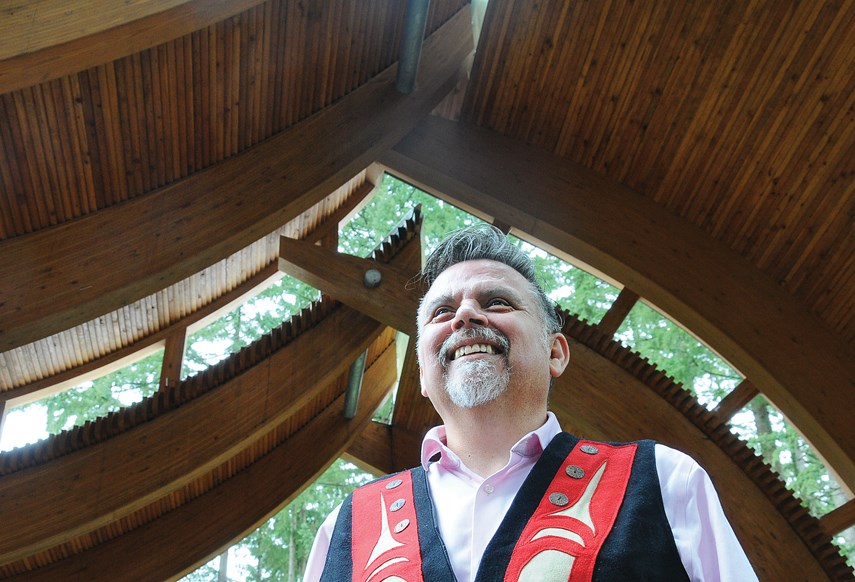It wasn’t until he tumbled down a flight of stairs that David Kirk went looking for a ladder.
Kirk, the First Nations adviser for Capilano University, was working for the post office at the time. It was a decent job, he recalls, better than the restaurants where he’d worked after dropping out of high school.
But things changed after he fell. He felt like he was locked up with a bureaucratic obstacle course, he recalls. It was at that point that the Sto-lo Nation member experienced a minor epiphany: if he didn’t make a change in his life he would be dealing with the same bureaucracy for the next 30 years.
“I thought, ‘You know what? I’m going back to school.’”
He went to Native Education College. The school helped him sharpen the academic skills that ultimately propelled him to a master’s degree in education and his current job at CapU.
Kirk is hoping Indigenous students will have a similar experience at CapU’s new University One for Aboriginal Learners.
Beginning this September, the eight-month program is intended to help Aboriginal, Métis and Inuit students establish an academic grounding that will prepare them for university.
Consisting of a dozen 100-level credit courses, the program is focused on reading, writing, and problem-solving skills, according to a release from the university.
“All students, not just our Indigenous or our First Nations that come to university, (are) often not academically prepared,” Kirk says.
The initial plan is to admit a “small cohort” of between 10 and 16 students, which should facilitate plenty of one-on-one instruction, Kirk says.
The currently have six students confirmed, according to Kirk.
The university will measure the program’s success by the commitment of the students, Kirk explains.
“I might have a student that has failed three-quarters of their classes but they’re still here,” Kirk says. “From a western point of view people might say, ‘Oh, that’s not a success story. . . . To us, that’s a success story.”
The program evolved out of discussions with First Nations communities, “and what they were saying out students needed,” Kirk says.
The number of Indigenous students graduating high school in B.C. has ticked up about 10 per cent over the last decade but still lags behind the provincial average. More than 50 Indigenous students graduated from CapU last year, more than doubling the total from 12 years ago, Kirk remarks.
“We’re slowly getting there. That doesn’t mean . . . we don’t have room for improvement.”
“For any person, if you want to advance your career, get a job, you have to have a post-secondary education.”
Kirk uses the terms Indigenous and Aboriginal interchangeably (“They’re all kind of colonizer terms,” he notes.) in discussing the historical underpinnings of CapU’s new program.
“The history of education for our people has not been the greatest,” he says, acknowledging the understatement.
“The whole intention (of residential schools) was to take away our language, our culture and our connection to the land,” he says. “It takes generations to heal from that.”
“My grandparents were both survivors of residential school and my grandfather insisted his children go to public school back in the ’40s to ensure that we got an education,” he says. “I think that’s where I get my advocacy from.”
One of the byproducts of residential schools has been a lack of trust in the education system, Kirk says.
That’s one of the factors contributing to the number of Indigenous men and women in their 20s and 30s who feel disqualified from higher education because they dropped out of high school or because they’re too old.
But for any student willing to make the effort, the program offers a ladder, Kirk says.
“It’s never too late.”



